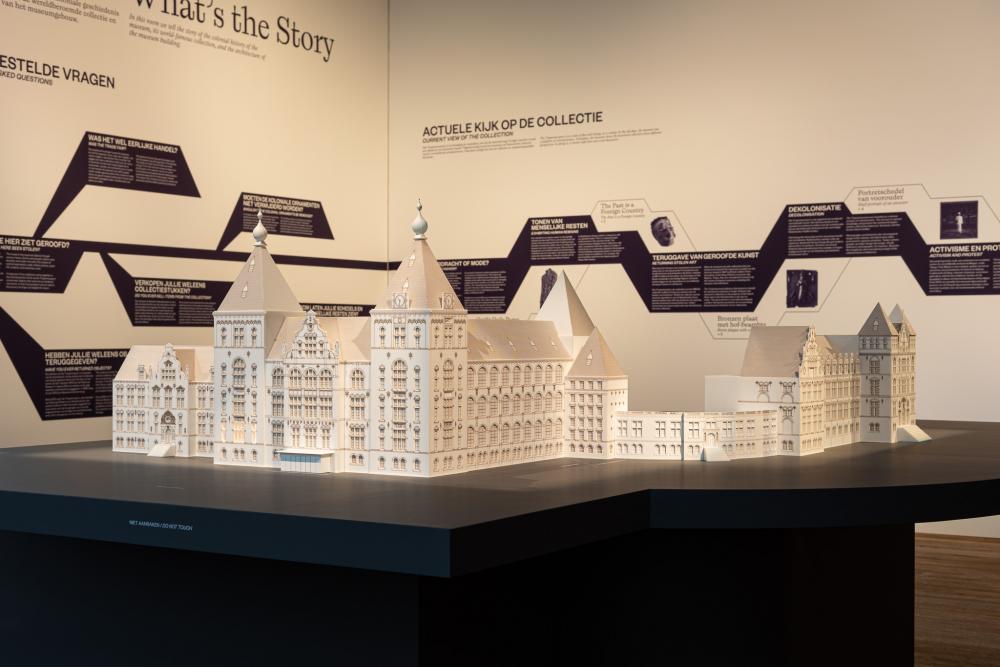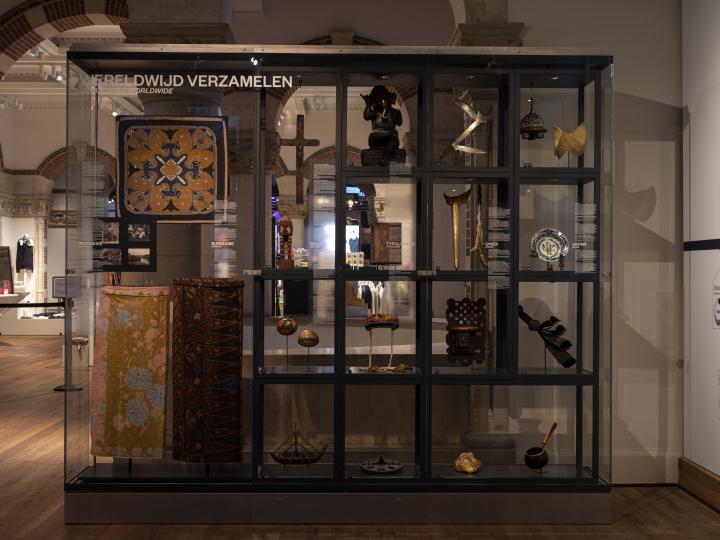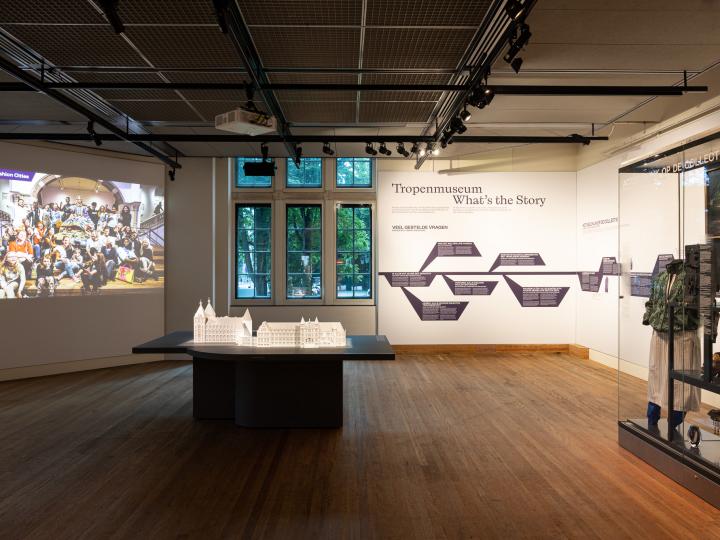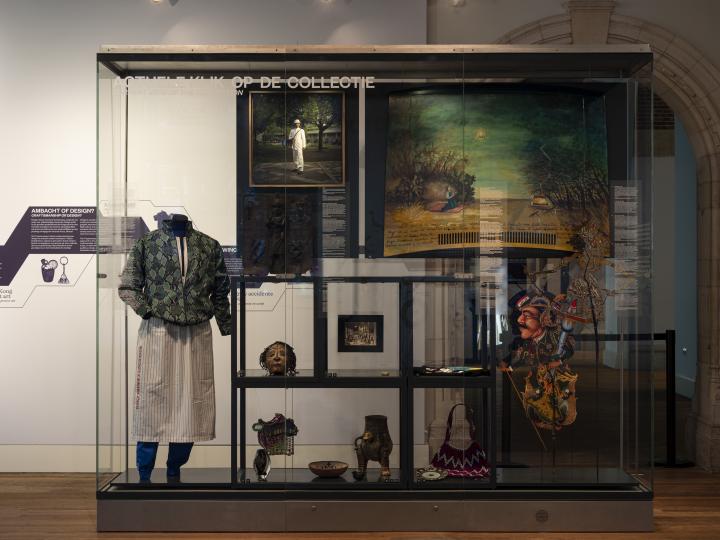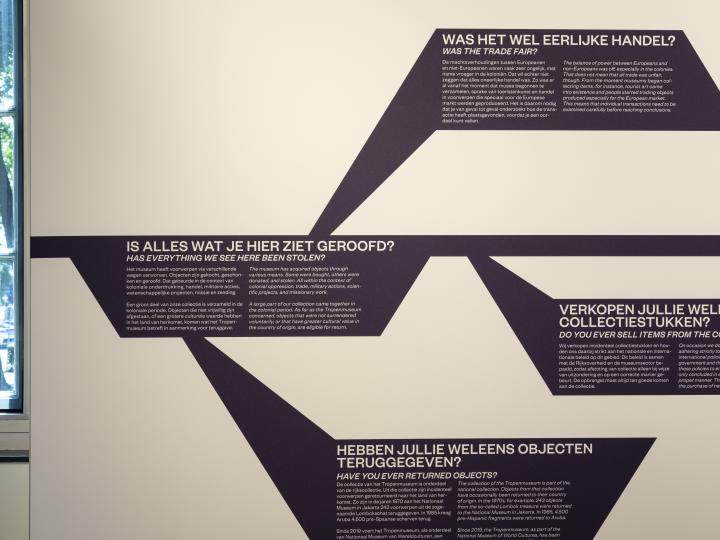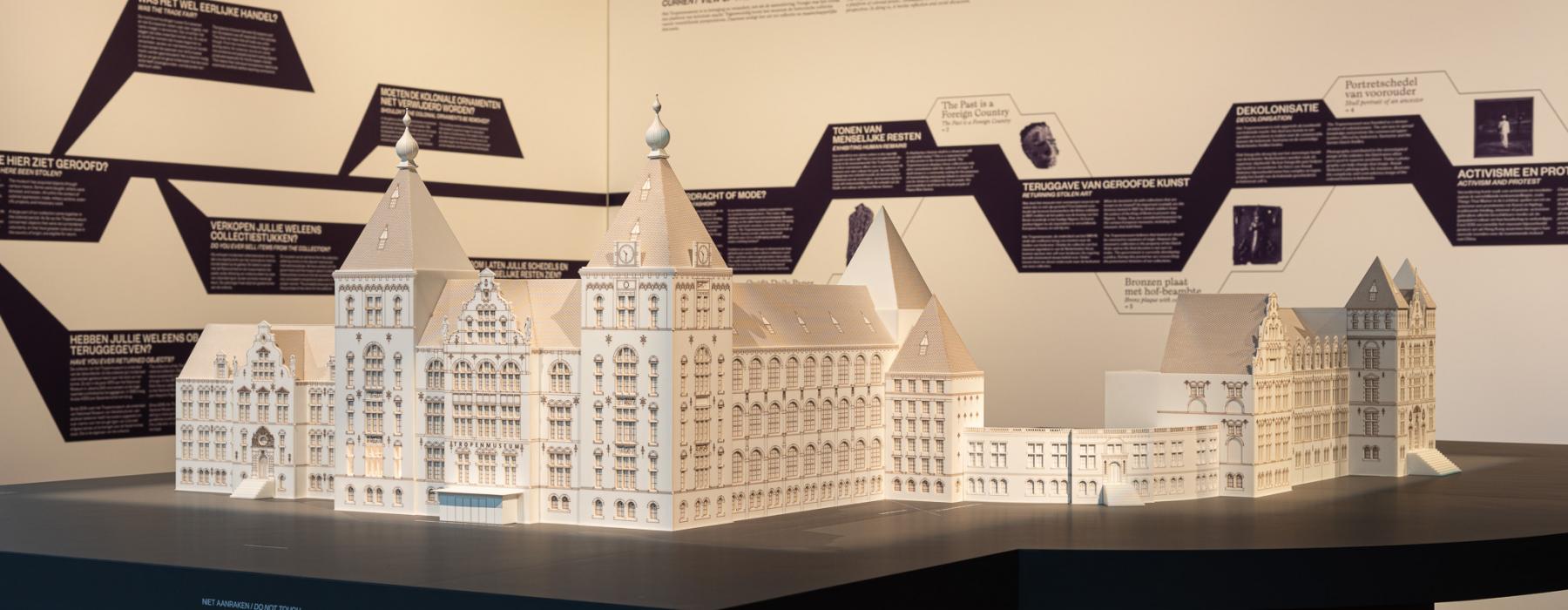
Wereldmuseum is on the move and changing, just like society. In the past it mainly had to propagate the colonial glory of the Netherlands. Nowadays the museum presents the historical collection from different perspectives, inviting reflection and social discussion.
Cross section of the collection
This exhibition shows you in a very approachable way the history of how the museum originated and developed. With the help of several objects, a model of the building and questions and answers, we relate the colonial origins of Wereldmuseum and their meaning today.
150 years of museum history
We briefly take you through almost 150 years of museum history. A history that reflects the changing vision of the museum, the collection and the exhibitions in relation to the colonial past and today’s world.
